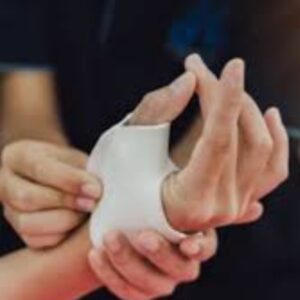
HAND THERAPY SERVICES
Exploring Hand Therapy Services
Hand therapy is a specialized area of rehabilitation focused on the treatment of conditions affecting the hand, wrist, and forearm. Hand therapists are occupational or physical therapists with advanced training and expertise in assessing and treating a wide range of upper extremity conditions, injuries, and disorders. Hand therapy services encompass a variety of interventions aimed at improving hand function, reducing pain, and maximizing independence in activities of daily living. Let’s explore the world of hand therapy services and their significance in rehabilitative care.
Understanding Hand Therapy Services
Hand therapy services address a broad spectrum of conditions affecting the upper extremities, including:
- Fractures and dislocations: Rehabilitation following fractures or dislocations of the hand, wrist, or forearm to restore range of motion, strength, and function.
- Tendon and nerve injuries: Treatment of tendon lacerations, repairs, or transfers, as well as nerve injuries such as carpal tunnel syndrome, cubital tunnel syndrome, or radial nerve palsy.
- Arthritis and degenerative conditions: Management of osteoarthritis, rheumatoid arthritis, and other degenerative conditions affecting the hand and wrist joints.
- Repetitive strain injuries: Assessment and intervention for conditions such as tendonitis, De Quervain’s tenosynovitis, and carpal tunnel syndrome related to repetitive use or overuse of the hands and wrists.
- Postsurgical rehabilitation: Comprehensive rehabilitation following hand and wrist surgeries such as tendon repairs, ligament reconstructions, joint replacements, or nerve decompressions.
Services Offered by Hand Therapists
Hand therapists provide a range of specialized services tailored to the individual needs of each patient, including:
- Evaluation and assessment: Thorough assessment of hand function, strength, range of motion, sensation, and dexterity to identify impairments and functional limitations.
- Custom splinting: Fabrication of custom orthotic splints to support, protect, or immobilize the hand, wrist, or forearm during the healing process.
- Therapeutic exercises: Prescription of exercises to improve range of motion, strength, coordination, and endurance of the upper extremities.
- Manual therapy: Hands-on techniques such as joint mobilizations, soft tissue mobilizations, and scar management to improve tissue mobility and promote healing.
- Modalities: Use of therapeutic modalities such as heat, cold, ultrasound, electrical stimulation, and laser therapy to reduce pain, inflammation, and swelling.
- Functional training: Training in activities of daily living (ADLs), work tasks, and recreational activities to promote independence and participation.
- Education and ergonomics: Patient education on injury prevention, joint protection techniques, ergonomic principles, and adaptive strategies for optimizing hand function in daily life.
Benefits of Hand Therapy Services
- Pain relief: Hand therapy interventions help reduce pain and discomfort associated with hand and wrist conditions, allowing patients to perform daily activities with greater comfort.
- Improved function: Through targeted exercises, manual techniques, and functional training, hand therapy services improve hand strength, range of motion, coordination, and dexterity.
- Faster recovery: Comprehensive rehabilitation provided by hand therapists promotes faster recovery, earlier return to work or sports, and improved long-term outcomes following hand and wrist injuries or surgeries.
- Prevention of complications: Hand therapy services help prevent complications such as stiffness, weakness, and loss of function following hand and wrist injuries or surgeries, optimizing overall outcomes and quality of life.
Conclusion
In summary, hand therapy services play a vital role in the rehabilitation of individuals with hand, wrist, and forearm conditions, injuries, and disorders. By providing specialized assessment, intervention, and education, hand therapists help patients regain function, reduce pain, and maximize independence in daily activities. Through a combination of therapeutic exercises, manual techniques, custom splinting, and patient education, hand therapy services optimize outcomes and improve quality of life for individuals with upper extremity impairments. Whether recovering from surgery, managing a chronic condition, or rehabilitating from an injury, hand therapy services provide comprehensive care and support to promote optimal hand function and well-being.


